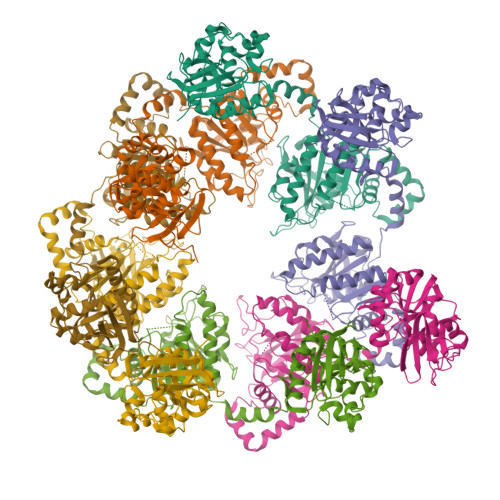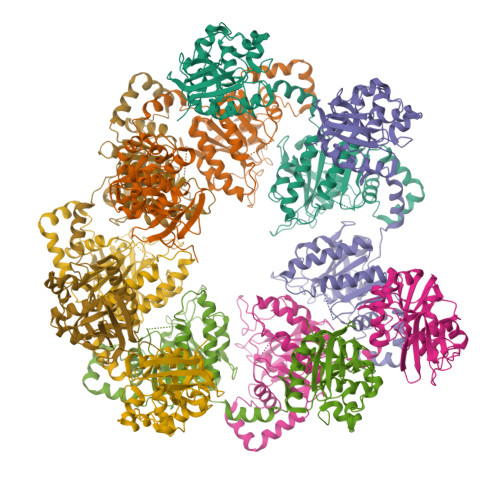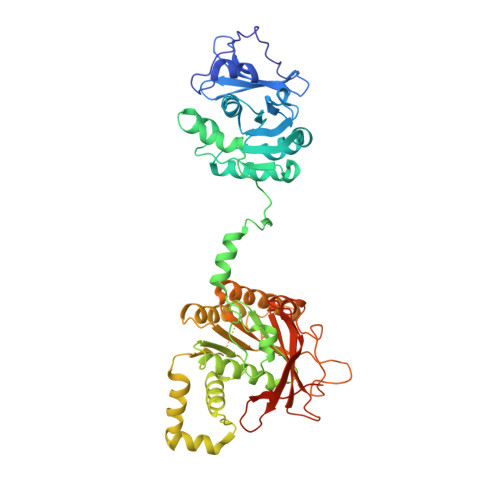The Crystal Structure of the Bifunctional Primase-Helicase of Bacteriophage T7
Toth, E.A., Li, Y., Sawaya, M.R., Cheng, Y., Ellenberger, T.(2003) Mol Cell 12: 1113-1123
- PubMed: 14636571
- DOI: https://doi.org/10.1016/s1097-2765(03)00442-8
- Primary Citation of Related Structures:
1Q57 - PubMed Abstract:
Within minutes after infecting Escherichia coli, bacteriophage T7 synthesizes many copies of its genomic DNA. The lynchpin of the T7 replication system is a bifunctional primase-helicase that unwinds duplex DNA at the replication fork while initiating the synthesis of Okazaki fragments on the lagging strand. We have determined a 3.45 A crystal structure of the T7 primase-helicase that shows an articulated arrangement of the primase and helicase sites. The crystallized primase-helicase is a heptamer with a crown-like shape, reflecting an intimate packing of helicase domains into a ring that is topped with loosely arrayed primase domains. This heptameric isoform can accommodate double-stranded DNA in its central channel, which nicely explains its recently described DNA remodeling activity. The double-jointed structure of the primase-helicase permits a free range of motion for the primase and helicase domains that suggests how the continuous unwinding of DNA at the replication fork can be periodically coupled to Okazaki fragment synthesis.
Organizational Affiliation:
Department of Biological Chemistry and Molecular Pharmacology, Harvard Medical School, 240 Longwood Avenue, Boston, MA 02115, USA.
















